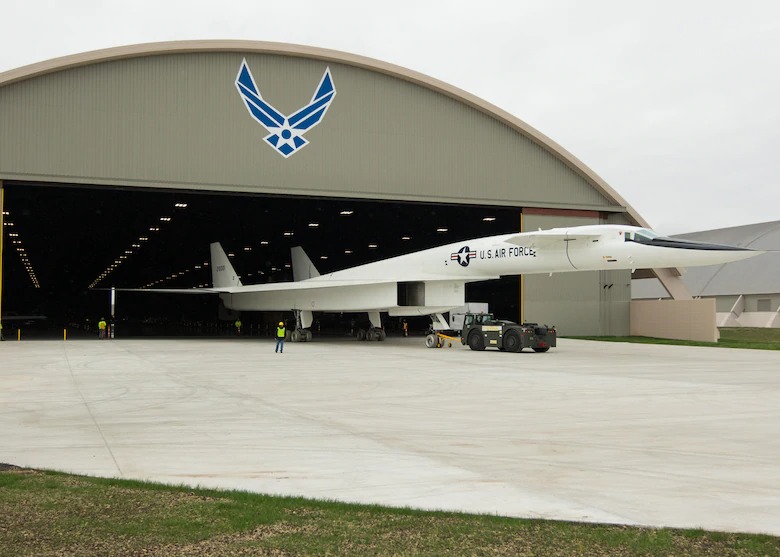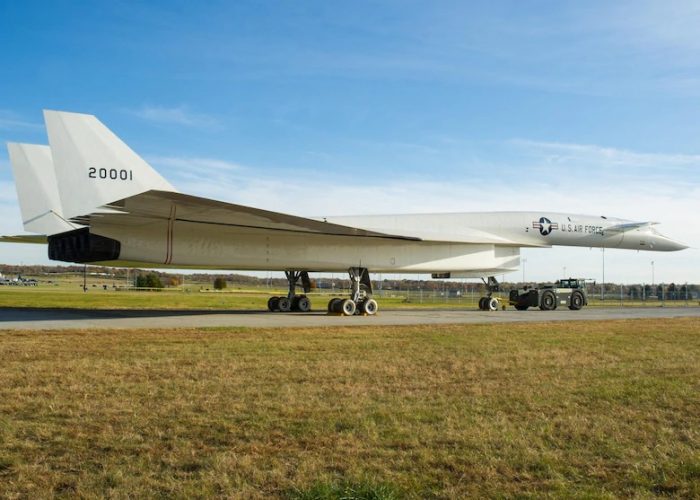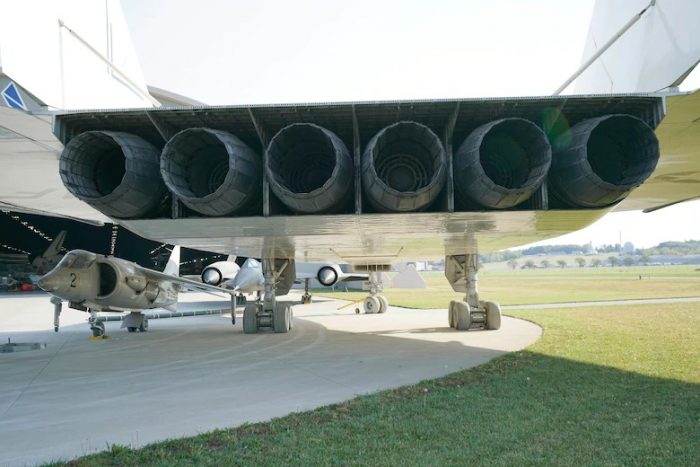Last Remaining XB-70 Rolls Out of Hangar Looking Brand New

Visitors to the National Museum of the U.S. Air Force in Dayton, Ohio, the home of the XB-70, were treated to a rare sight this past October as maintenance work on its storage hangars required the temporary relocation of a rare piece of American aviation history.
Workers towed the single remaining North American XB-70 Valkyrie, a Cold war era supersonic bomber design, out onto the tarmac while displays were maintained inside the one of the museum’s hangar facilities.
Immaculately kept, the jet was removed from the hangar and displayed outside where the pristine machine looked as ready to fly as the day it was built.
Cancelled over 50 years ago, the XB-70 was one of two aircraft built as part of an experimental bomber program that sought to overcome Soviet air defenses by rapidly penetrating borders at high speed and high altitude.

Despite being a marvel of Cold War technology, the six-engine supersonic aircraft never entered production – after one of the two prototypes was lost in a mid-air collision, the remaining plane was consigned to research purposes before being mothballed due to aerodynamic design issues and the dangerously powerful shockwave it generated at high speeds and while maneuvering.
This unique design was designed to “ride” the shockwave that it generated to enable higher speeds, using adjustable wingtip angles to improve stability during supersonic flight. From its first test flight in September of 1964, however, it became apparent that there were many structural and aerodynamic issues to be resolved.
A second aircraft was commissioned, flying its first test flight in July of 1965 with greatly improved speed and performance capabilities.
It was decided that the second aircraft would be used by NASA and the Air Force as a test bed for developments in supersonic flight. Supersonic flight was relatively new at the time, and was by no means common nor safe.
Commercial supersonic flight was the new prize to be attained, and the second XB-70 was given over to cause alongside a host of other experimental aircraft to develop a safe and reliable enough system to put before the traveling public.

For reasons related the to rapid Cold War expansion of aerospace technology worldwide, this would ultimately become a more productive use for the XB-70 than combat.
Despite the cutting-edge performance of the second prototype, the XB-70 suffered from being the wrong plane at the wrong time: while the United States was developing aircraft that could fly higher and faster than the Soviet air defense systems of the day, the Soviets were rapidly improving these systems, cutting the efficacy of a project like the XB-70 even as it was developed.
Achieving manned flight at an altitude of 70,000 feet and a speed greater than Mach 3 was no small feat for North American, but a system to counter such aircraft has the immediate advantage of not having to worry about a round trip nor pilot safety.

The XB-70’s successors in decades to come, such as the Rockwell B-1 Lancer and the Northrop Grumman B-2 Spirit, would follow a different strategy of lower-altitude and lower-speed incursions to evade detection.
Finally, the program suffered the catastrophic loss of one of its prototypes in 1966 when the second of only two prototype aircraft built collided with its chase plane (an aircraft accompanying the test plane to gather data on its performance) during a test flight. Two of the three crew members aboard were killed and the third seriously injured.

As the second prototype was a more advanced version of the first, the program was severely hampered by the loss. Despite subsequent upgrades, the first aircraft reached Mach 3 in only one test flight during its service life.
Further development issues such as noise, poor handling and mechanical vibration at high speeds in the remaining prototype ultimately led to the cancellation of the program in 1969.
The model on display logged a total of 160 hours and 16 minutes over 83 flights in its service life, and after its final flight on Feb. 4 1969 it was delivered to Wright-Patterson Air Force Base in Ohio where it rests today in the Air Force Museum.
Another Article From Us: Watch These Birds in Their Final Moments Before Being Scrapped
The museum, temporarily closed to visitors during the COVID-19 pandemic, has reopened with safety precautions in place.
